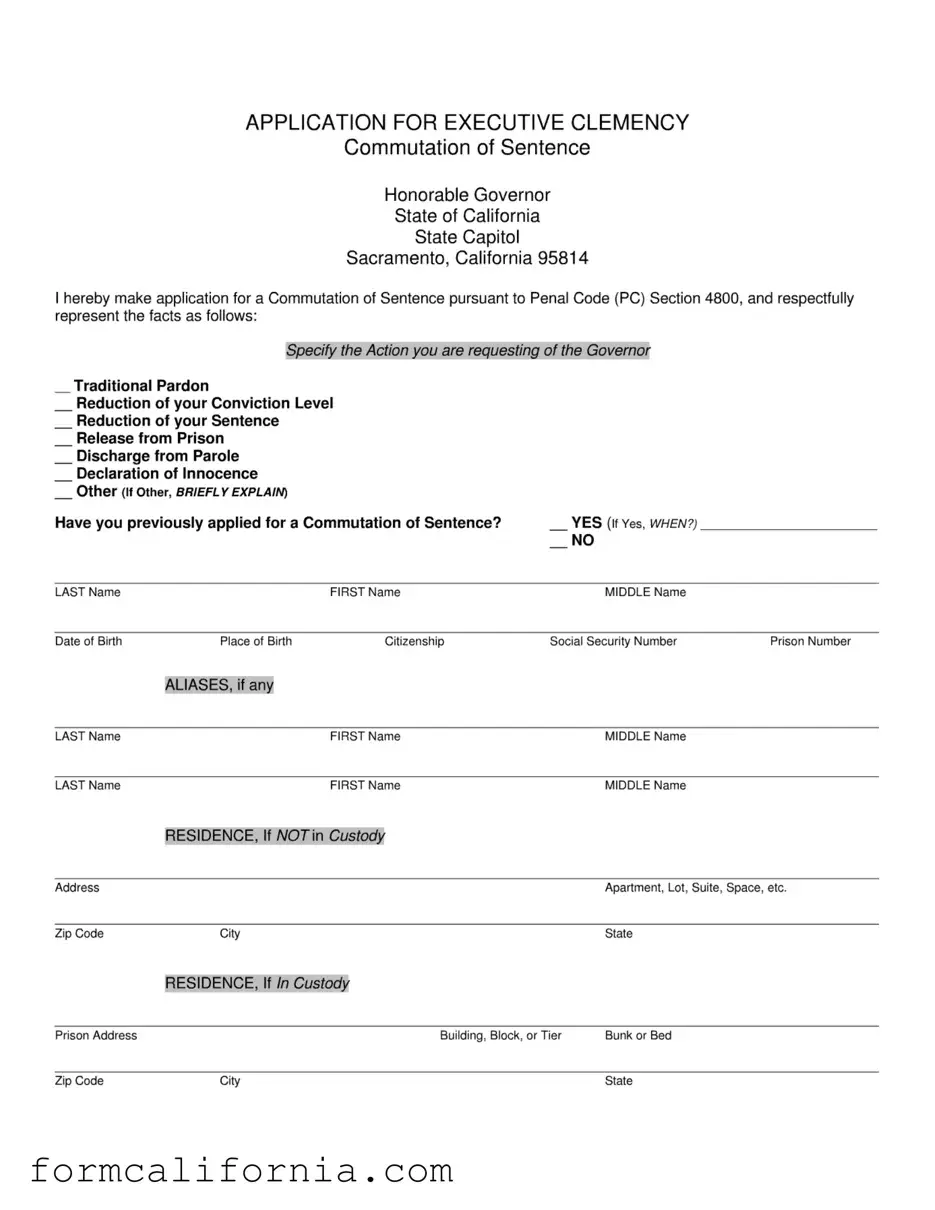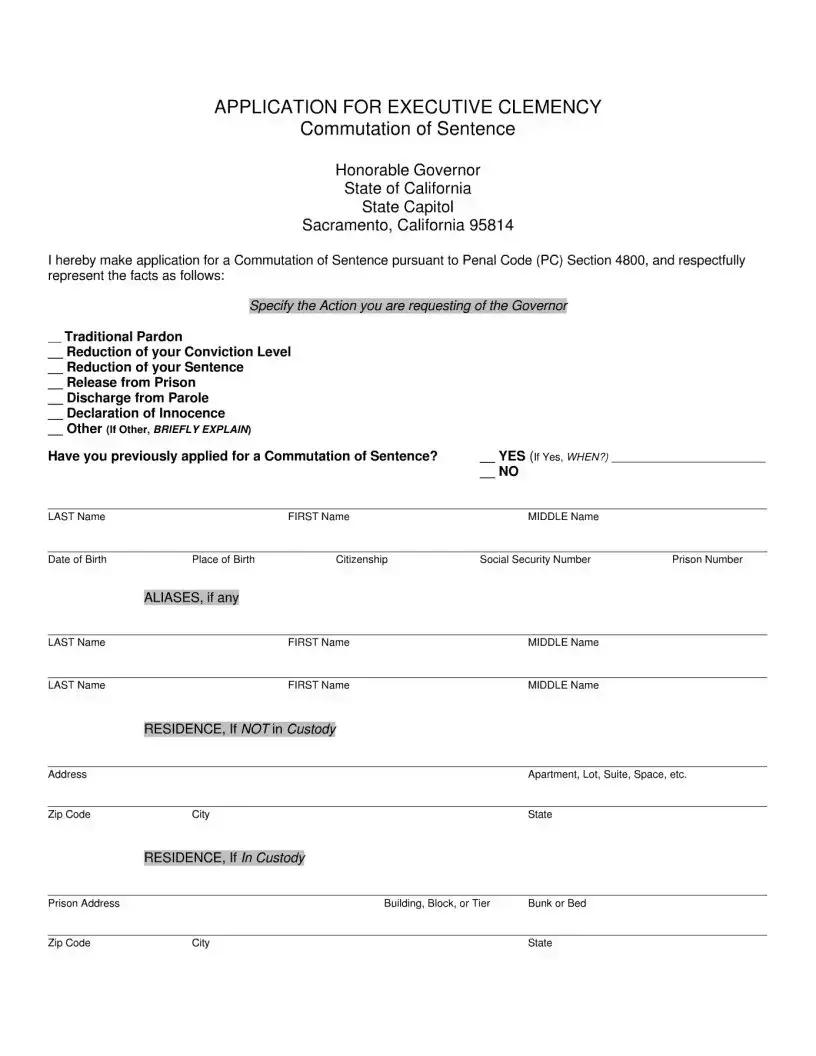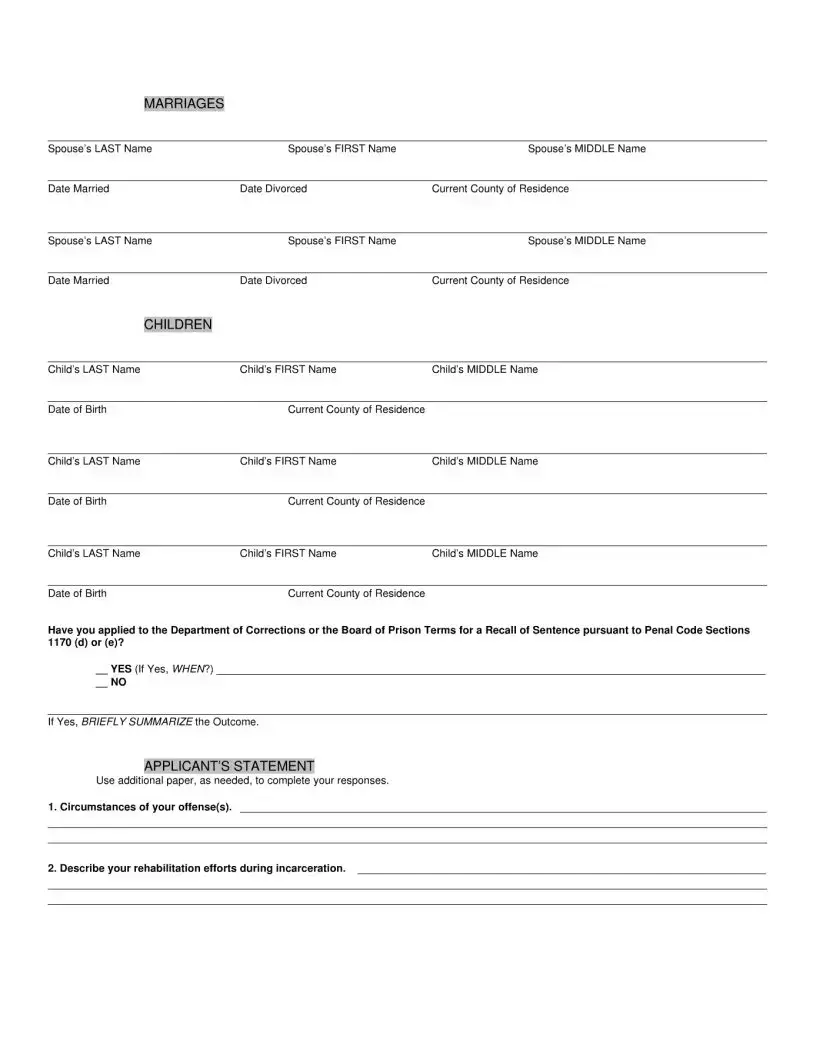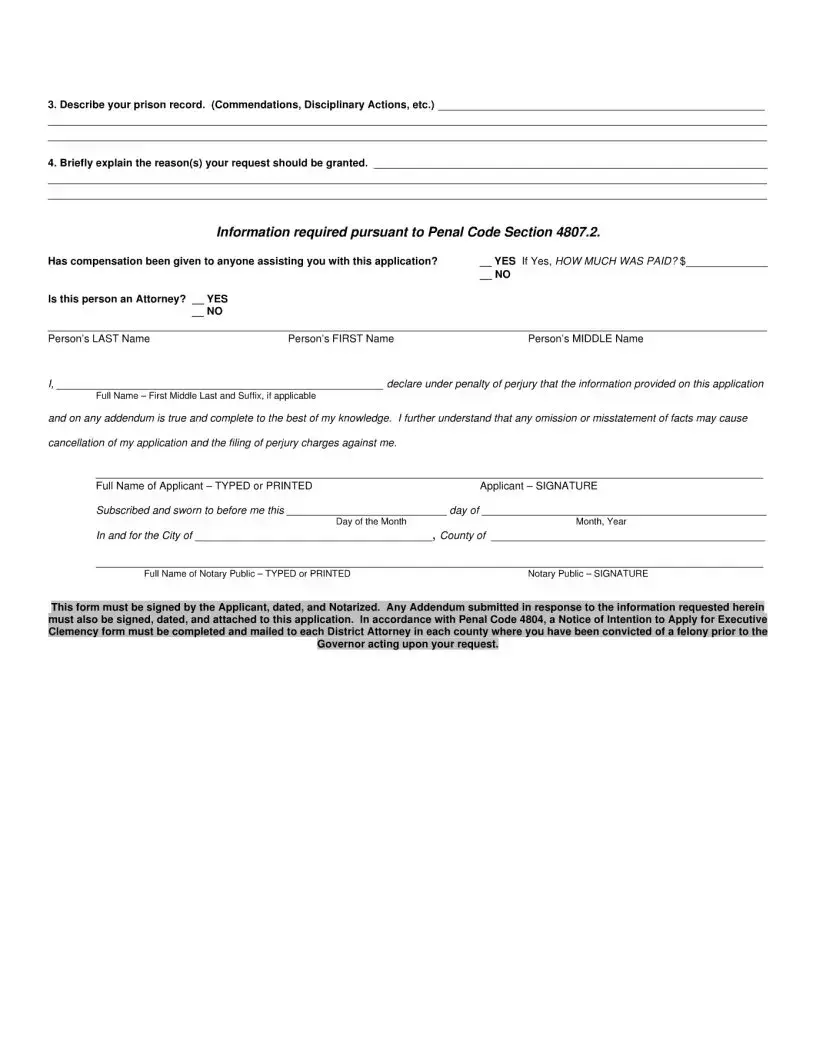The California Executive Clemency form bears similarity to a Pardon Petition used in many states. Both documents serve as formal requests for forgiveness of crimes from a state's executive branch, typically filed by individuals seeking relief from the consequences of a criminal conviction. In essence, these forms outline the petitioner's request, detailing their conviction history, personal growth, and reasons for seeking clemency. They aim to demonstrate the petitioner's rehabilitation and readiness to rejoin society as a law-abiding citizen. Similarities include the need to provide a comprehensive personal history, evidence of rehabilitation, and, often, character references.
Another document with close resemblance is the Commutation of Sentence application. Like the clemency form, this application is used by individuals who are seeking a reduction in their sentence. Both documents require the applicant to make a compelling case about why their sentence should be reduced, including demonstrating remorse, rehabilitation, and a positive change in behavior. However, while executive clemency can include a pardon, commutation specifically refers to reducing the length of a sentence, without nullifying the conviction itself.
The Expungement Application also shares similarities with the California Executive Clemency form. Expungement is the legal process that can clear a convicted person's record under certain conditions. Both forms involve a legal review of the applicant's criminal record, personal growth, and contributions to society since their conviction. They also require detailed personal information, legal history, and an explanation of why granting the request would serve justice or benefit the individual and the community. The key difference is that expungement typically involves a court process, while executive clemency is a discretionary act by the governor or a board.
A Conditional Release application is remarkably similar to the clemency form as well. This application procedure is initiated by individuals who are seeking early release from prison under specific conditions, such as parole. Both documents necessitate a thorough presentation of the applicant’s history, behavior while incarcerated, rehabilitation efforts, and a plan for reintegration into society. They are both geared toward convincing the reviewing authority that the applicant poses no threat to the community and has demonstrated significant personal improvement warranting a modification to their original sentence.
Last but not least, the Request for Reprieve application shares common ground with the California Executive Clemency form. A reprieve temporarily delays the execution of a sentence, particularly in death penalty cases, to allow further examination of new evidence or consideration of legal issues. Although a reprieve is generally of a shorter duration and more immediate in nature than other forms of clemency, both applications involve a review process where the petitioner must present a compelling reason to warrant the temporary or permanent relief sought from their sentence's execution. This highlights the humanitarian appeal often inherent in such requests, reflecting the applicants' hopes for mercy from the executive authority.




